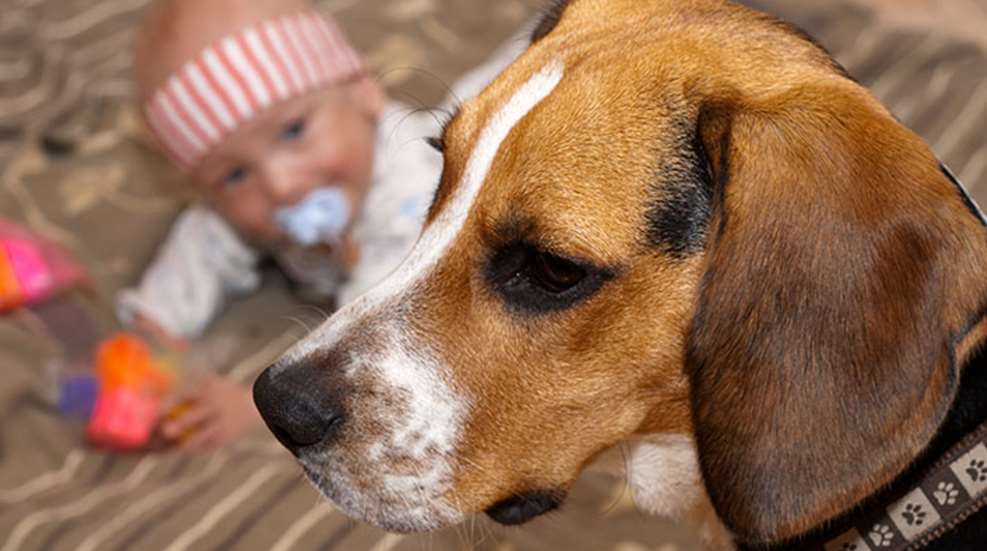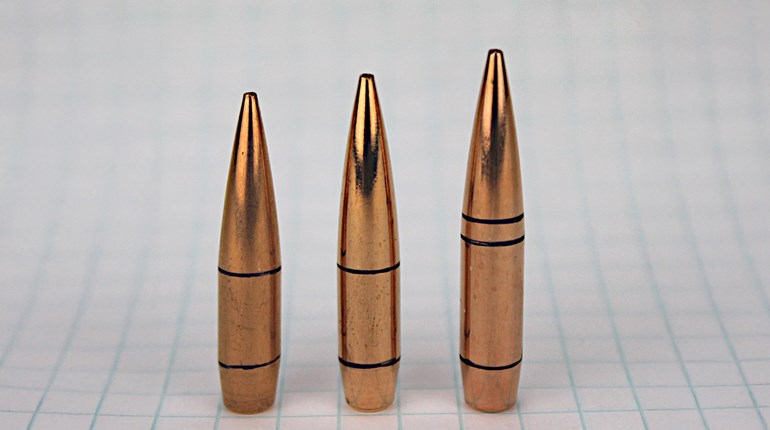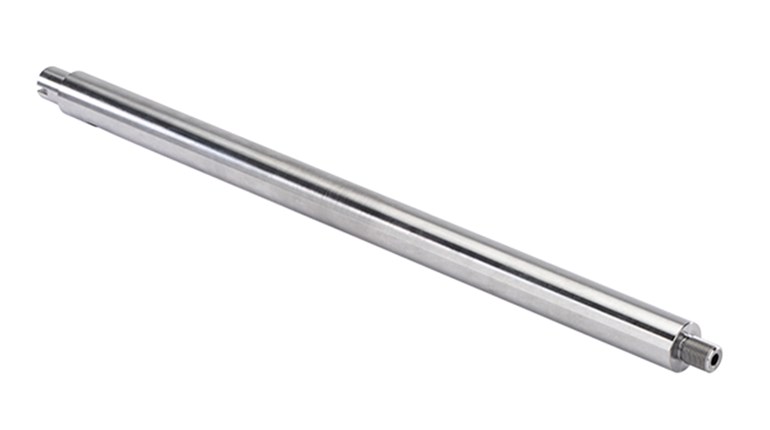
Just a generation or two ago, most families kept “Dad’s hunting dog” outside. It was assumed that house life would somehow make the dog a softer, less enthusiastic hunter. We now know that’s not the case and, for most of us, our gundogs are treated as members of the family. As such, they live indoors and must learn to behave as good citizens within the family hierarchy. Given even a modicum of obedience training, most dogs of mild temperament pick this up rather naturally. However, a particular scenario can throw even well-adjusted dogs for a loop: the arrival of a newborn baby.
Babies introduce a variety of new sounds to the home environment (oh, do they ever), as well as unfamiliar smells. Your dog’s daily routine is also certain to see adjustment. The sum of these changes can be quite a shock to your dog, which may manifest itself as bad behavior and other signs of stress. Fortunately dog behaviorists have delved greatly into this topic.
When my wife and I learned we were expecting our first son, I began poring into the research. Here are the best tips I’ve found to facilitate the introduction of dog to baby.
Ensure Obedience Beforehand
If your dog rules the roost now—he hops onto whatever furniture he pleases, he jumps up on people, he barks, etc.—how can he be expected to behave once a baby arrives? When you learn that a newborn is on the way, you have nine months to focus on obedience as never before. Do not ignore this simple but important step.
Keep Nursery Off Limits
You can also teach your dog during this time period that the nursery is off limits. The first months of your baby’s life will be spent changing diapers, feeding him and otherwise comforting him in the nursery throughout many hours of the day. The last thing you need is an excited dog interfering or otherwise causing annoyance. So, position a baby gate or other barrier to block the dog from the nursery. Scold the dog for approaching the gate. Once the dog has gotten the message, remove the gate and continue discouraging the dog from nearing the door’s threshold.
Ease the Transition
When the baby is born, his mother will spend two to three days with him in the hospital. This is a great time for dad to introduce the family dog to the new baby’s smell before the grand homecoming. Experts advise allowing the dog to sniff a used clothing item, burp cloth or blanket—anything with your baby’s scent—to prepare the dog for his arrival. According to Cesar Millan, you can use the opportunity to set boundaries for the dog as well. “Challenge the dog to sniff from a distance, while you are holding the item,” he writes. “By doing so, you are communicating to your dog … ‘This new item belongs to me, and you will need to follow my rules when around it.’ This helps start the process of creating respect for the baby.”
The Big Introduction
Prior to introducing your dog to the baby, take the dog for a long run or walk to ensure he’s as calm as possible. As an added precaution against excitement, try to wait until the baby is sleeping in the arms of a relaxed, seated family member prior to bringing the dog inside. Keep the dog leashed, and project a calm confidence as you enter the home. You don’t want the dog to pick up on any nervousness or excitement and exude these emotions himself. Allow the dog to smell the baby, but most experts advise against allowing the dog to get within an arm’s reach of the baby at this point. Given that your pup is a bird dog, he should have no trouble smelling the baby from across the room. Do not allow the dog to lick the baby’s face, most importantly as a precaution against germs, but also because you don’t yet know how he will react to the newborn. You can gradually allow the dog to get closer to the baby once he has demonstrated calm acceptance of the baby’s presence, but continue to hold off on physical contact for now. Finally, while I consider this to be common sense, never under any circumstances allow the dog to be alone with the baby. In the rare cases in which dogs have injured newborns, a lack of supervision is almost always at play.
Curing Over-Excitement
Despite these precautions, your dog may become overwhelmed and overly excited about the newborn’s presence. When exercise alone won’t cut it, it’s time to crate your dog around the baby until he’s comfortable with his new reality. So, ensure your dog has been properly crate trained, which I consider an essential component of any house dog’s curriculum, baby or no baby. The crate is a safe, calm place for the dog. In time, the dog will adjust to the baby and the crate won’t be necessary. You can proceed once again with leashed visits until ultimately you are comfortable allowing the dog around your child off-leash.
Maintain the Dog’s Routine
It’s basically impossible to maintain the routine you once knew after a newborn arrives. However, you owe it to your dog to try to maintain some semblance of the familiar. If you threw bumpers or walked him at a certain hour prior to the baby, make it a priority to maintain these habits once the baby arrives. In doing so you’ll help the dog adjust to the new family dynamic and prevent feelings of neglect or jealousy.
Train Your Baby, Too
As the many happy months among parents, dog and baby go on, you can begin to allow highly supervised interaction between your dog and the newest family member. Typically this occurs as the baby begins to crawl and curiously investigate his surroundings. Note that teaching your baby to be courteous of the dog is just as important as training the dog. Keep an eye out for any potential offenses—yanking the dog’s tail is a common one—and nip them in the bud with a gentle “no.” Both baby and dog need to be taught to treat each other as respected members of the family pack.
Consider Dog Camp
If you’ve ever considered getting your dog some professional training, dropping him off in the weeks leading up to your baby’s arrival is the perfect time. With the dog off at camp, you’ll have more time to focus on the newborn (won’t your schedule be crazy enough without caring for a dog, too?) Then, when the dog comes home, he’ll be tuned up for hunting season and you’ll have a routine established with the baby. Talk about win-win.
Certainly a dog in the home requires diligence and extra effort as you grow your family. But it’s not without benefit. Studies have shown that a dog in the home improves babies’ immune systems and greatly reduces their risk of developing allergies. And, though no studies address it, I think you’ll agree every kid deserves to grow up with a loyal bird dog.






































